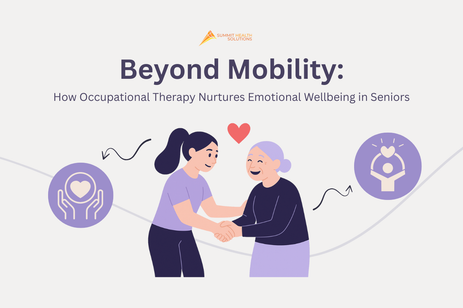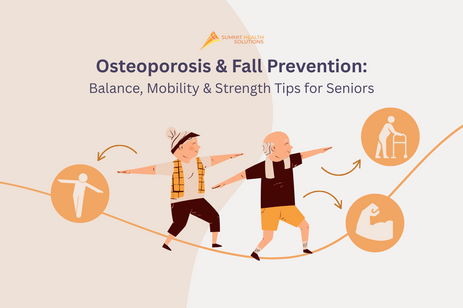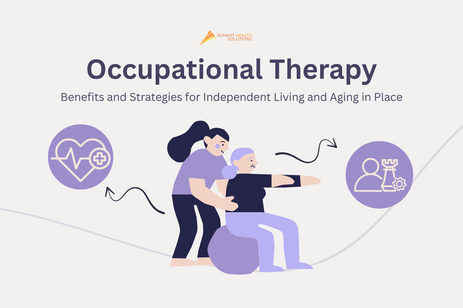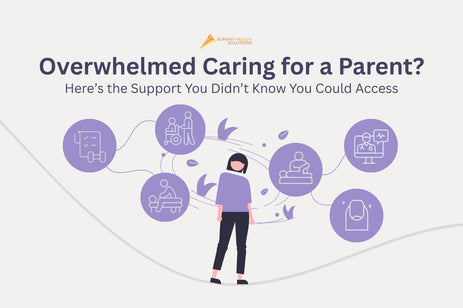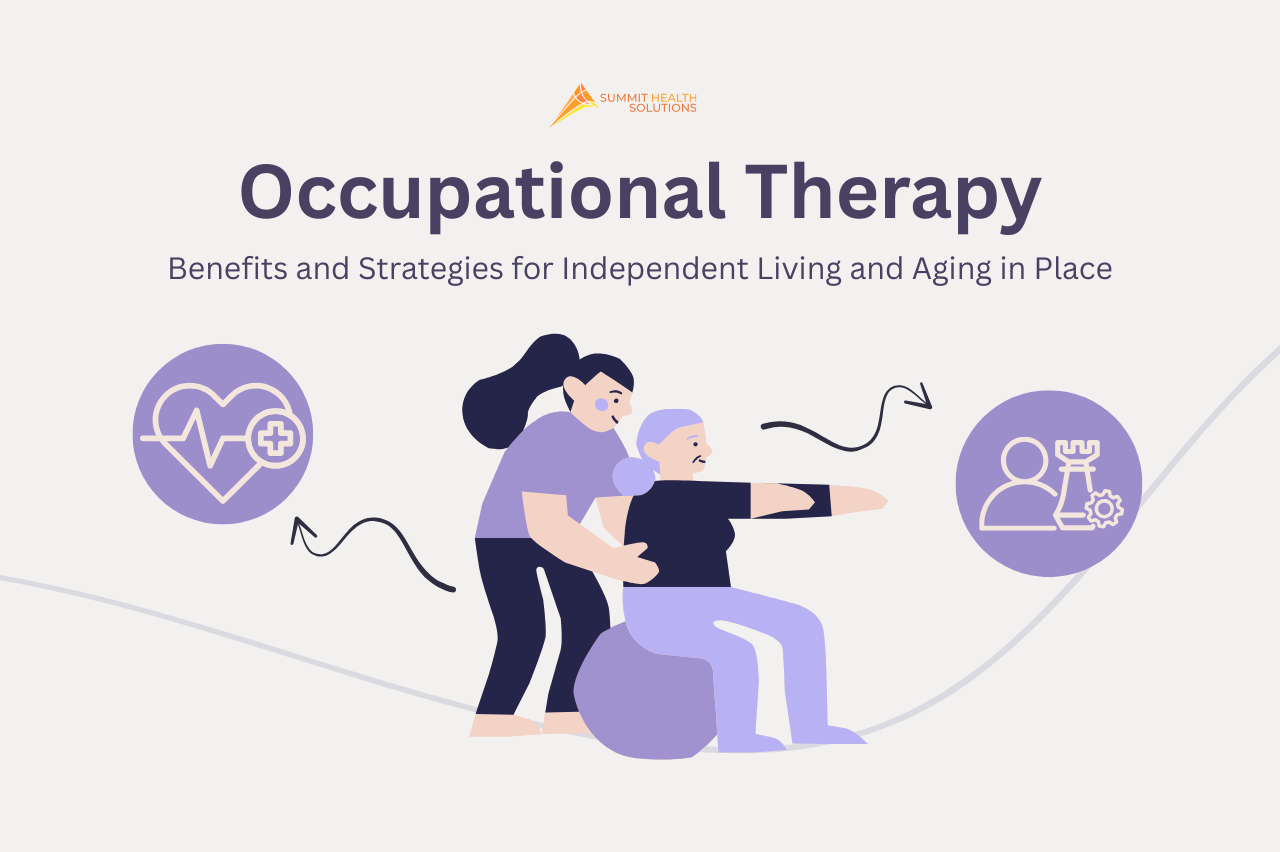
Climbing stairs, preparing meals, or simply moving around the house can gradually become harder as we age. Aging often comes with challenges that can affect independence, mobility, and quality of life. Occupational therapy plays a vital role in helping adults, particularly older adults, maintain their ability to live comfortably and safely at home. By focusing on strategies that support independent living and aging in place, occupational therapy empowers individuals to preserve their dignity, confidence, and everyday routines.
In this blog, we’ll explore the key benefits of occupational therapy, practical strategies for aging in place, and how Summit Health Solutions provides tailored services that make independence not only possible but sustainable.
What Is Occupational Therapy?
Occupational therapy (OT) is a health profession that supports people in engaging in meaningful daily activities, despite challenges related to injury, illness, or aging. For older adults, OT often focuses on restoring independence, ensuring safety, and improving overall quality of life. According to Occupational Therapy Australia, occupational therapists work across various settings to enable people to participate fully in their communities and daily lives.
Benefits of Occupational Therapy for Adults
Promotes Independent Living
Occupational therapy for adults is designed to help individuals manage tasks such as cooking, bathing, dressing, or moving safely within their homes. By teaching new ways to approach these activities, occupational therapists make it possible for adults to maintain independence longer.
Supports Aging in Place
The concept of aging in place—remaining in one’s home rather than moving to assisted living—has become increasingly important for families. With occupational therapy, homes can be modified to reduce fall risks, improve accessibility, and ensure comfort. The Australian Institute of Health and Welfare highlights the growing preference for older adults to stay at home, emphasizing the role of support services like OT.
Enhances Quality of Life
Beyond physical adjustments, occupational therapy also addresses emotional and social well-being. By creating opportunities for engagement, encouraging functional fitness, and supporting routines, OT helps maintain mental health and a sense of purpose.
Practical Strategies for Aging in Place
Home Modifications
Simple changes such as installing grab bars, ramps, and non-slip flooring can significantly reduce the risk of falls. Occupational therapists assess home environments and recommend adjustments to enhance safety and accessibility.
Functional Fitness Programs
Maintaining strength, flexibility, and balance is essential. Occupational therapists often integrate functional fitness into daily routines, focusing on exercises that directly improve the ability to carry out daily activities.
Assistive Technology
From mobility aids to adaptive kitchen tools, assistive devices can simplify tasks and reduce strain. OT professionals guide clients in selecting and using the right tools for their needs.

Education and Support for Families
OT isn’t just for the individual—it also helps caregivers and family members understand how to best support their loved one’s self-sufficiency.
Real-Life Example of Occupational Therapy in Action
Aging doesn’t have to mean losing independence. For example, after a fall, Olivia found it harder to manage everyday tasks, and her daughter Emma worried about her safety. To support her, Emma sought help from Summit Health Solutions. Through a series of thoughtful adjustments, including home modifications and personalized OT strategies, Olivia regained her confidence. These changes proved that with the right support, confidence can be maintained—not lost.
Discover more in our blog: "Maintaining Independence with the Right Support"
Why Choose Summit Health Solutions?
At Summit Health Solutions, we provide personalized occupational therapy services tailored to each individual’s needs. Our team specializes in helping adults adapt to the challenges of aging, ensuring they can continue living comfortably and independently. Whether it’s through functional fitness programs, home modifications, or caregiver support, we are committed to improving the quality of life for our clients.
Learn more about Summit Health Solutions here.
FAQs about Occupational Therapy for Independent Living
What is the difference between occupational therapy and physiotherapy?
While both focus on improving function, occupational therapy emphasizes daily living skills and adaptations, whereas physiotherapy primarily targets physical rehabilitation and movement. Learn more from Healthdirect Australia.
Can occupational therapy help prevent falls at home?
Yes. Occupational therapists assess home environments, recommend modifications, and teach safe movement techniques to reduce fall risks, a leading concern for aging adults.
How does occupational therapy support caregivers?
OT provides training, guidance, and resources for caregivers, helping them manage stress and better assist their loved ones with daily activities.
Can occupational therapy improve mental health for older adults?
Absolutely. By promoting engagement in meaningful activities, maintaining independence, and reducing isolation, OT positively impacts mental health and overall well-being.
Occupational therapy is more than rehabilitation—it’s about enabling autonomy, supporting aging in place, and enhancing the quality of life. Whether through home modifications, functional fitness, or emotional support, occupational therapy empowers older adults to live safely and confidently at home.
At Summit Health Solutions, we’re here to guide you or your loved ones every step of the way. With the right support, independence is not just possible—it’s sustainable. Book a consultation with our occupational therapy team today to start creating a safer, more independent home.



